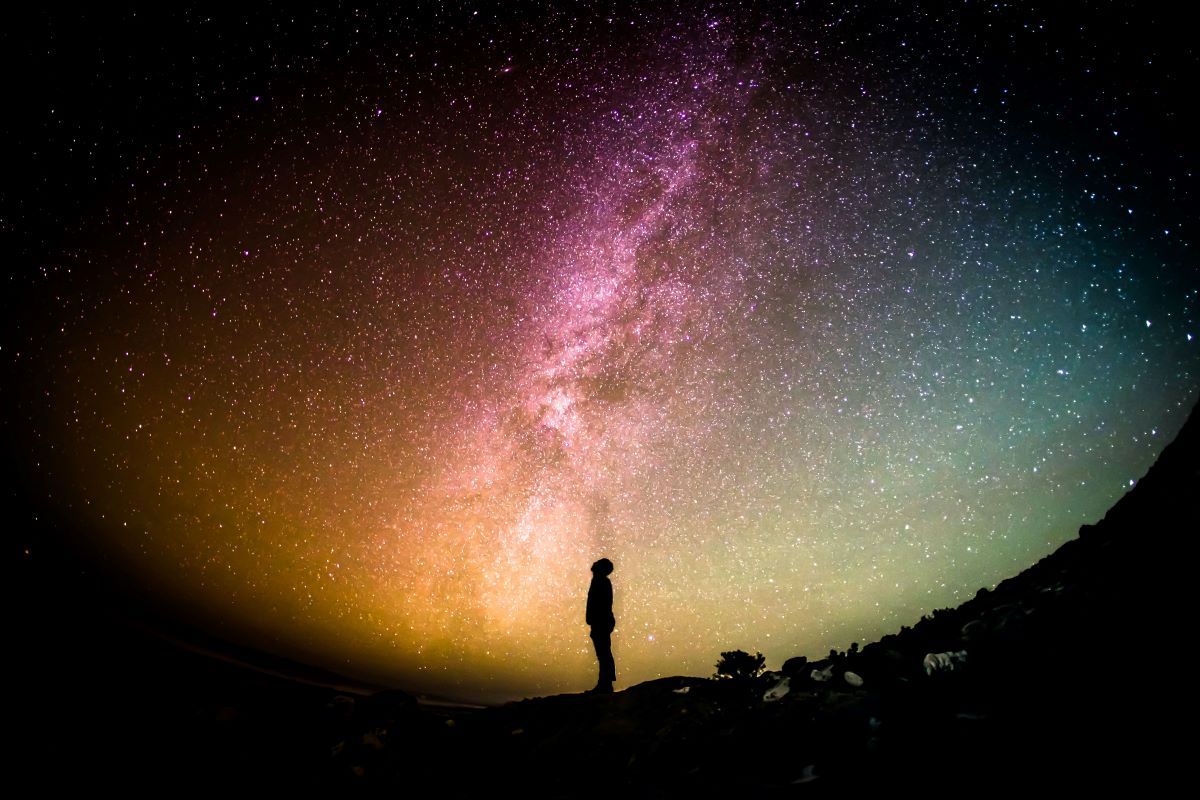
As a sickly child, I was often to be found sitting in the ramshackle old conservatory that formed part of the waiting room for the surgery of our family doctor. Two things struck me about that conservatory. The first was the miraculous tenacity of the hanging vines that clung to its grimy interior that, in some years, even managed to produce a few shrivelled grapes. The second was the view that it afforded of a gaudy pink building perched beneath us, incongruous in an otherwise drab Midlands industrial town.
This building was known locally as the “Steiner school”. Its memory has remained with me ever since; now symbolic to me of the whole invisible world of ideas in which we live and die—usually blissfully ignorant of its power. It was only much later in life that I was to have any idea at all of who Rudolf Steiner was and why his influence had stretched all the way from the remnants of the Austro-Hungarian Empire to my inconsequential corner of the world.
An opinion piece by J. Paul Greenaway, recently published by UK Column, once again brought this pink building to mind. He asked the question Is “spiritual science” science? with reference to the “flawed legacy” of Rudolf Steiner. This was a huge question and the author clearly knew that his commentary could only be an opening gambit in any attempt to explore the life and work of Rudolf Steiner. In this spirit, he offered us a “few pointers” based on his own experience of working in educational institutions based on the ideas of this undeniably complex Austrian thinker. As a reader, I would say (and I venture that the author would perhaps agree) that these “pointers” were guided by his own disillusionment with both these ideas and the way in which his ideals were now being implemented in the modern version of the Steiner (Waldorf) schools and Camphill communities.
The author then invites us to peer into Steiner’s work for ourselves—and this is my response to that invitation. I believe that an understanding of Steiner and his world can provide a very useful contribution to our comprehension of the current push for globalisation, planetary consciousness and, ultimately, the evolution of the human species.
Steiner’s body of work is so vast that I am going to concentrate only on the central question raised by the author:
What did Steiner mean by “science”?
Steiner’s World
It is impossible to understand Rudolf Steiner’s concept of science without appreciating something about the world from which he emerged.
Steiner hailed from a humble background in a magical land. It was a land of castles, alchemist princes and sorcerer emperors: the Mitteleuropa of the Holy Roman Empire and the territories of Poland and Hungary.
He passed most of his early life in the mountains of Austria and Hungary, where his father worked firstly as a telegraph operator and then as a station master for the newly established South Austrian Railway. His childhood village was so quiet that people would rush out of their houses to experience the excitement of the train roaring through their previously undisturbed lives.
Young Rudolf lived on the borders between the old and new worlds. He also claims to have inhabited a different hinterland; one which may explain why his life’s mission came to be nothing less than to bring about a revolution in human consciousness.
As a young child, between five and seven years of age, he encountered an unknown woman in a station waiting room. The woman bore a family resemblance and asked the boy to try to help her as much as possible both now and later in life. She then disappeared. He later found out that a relative he had never met had committed suicide that same day. Steiner was convinced that his vision was the woman’s spirit. From this day on, he said that he had access to the spiritual world that included not only human spirits but the spiritual beings who stood behind all of nature.
Strangely, another child of the Austrian Empire (also destined to become a prominent and influential thinker) born only five years before Steiner experienced a similar split between his “inner” and “outer” worlds.
The young ethnic Serb, Nikola Tesla (1856–1943), would frequently experience intrusive images (often accompanied by strong flashes of light) that were so real that in some instances he could not distinguish them from the tangible scenes and objects of everyday life. Neither could he make these scenes disappear even by pushing his hand through them. These images caused him great distress and anxiety and made him feel weak and powerless until he was twelve years old, when he read a novel with the theme of a heroic transformation of character which seemed to awaken his own willpower. Tesla then began to enjoy controlling the intrusive images, not by banishing them but by working with them—he began to let his imagination roam freely and channel them. He then allowed them to lead him into places and relationships that were “real” as in a lucid dream, but which he had not experienced in waking consciousness:
Then I instinctively commenced to make excursions beyond the limits of the small world of which I had knowledge, and I saw new scenes. These were at first blurred and indistinct, and would flit away when I tried to concentrate upon them, but by and by I succeeded in fixing them; they gained in strength and distinctness and finally assumed the concreteness of real things. I soon discovered that my best comfort was attained if I simply went on in my vision farther and farther, getting new impressions all the time, and so I began to travel—of course, in my mind. Every night (and sometimes during the day) when alone, I would start on my journeys—see new places, cities and countries—live there, meet people and make friendships and acquaintances and, however unbelievable, it is a fact that they were just as dear to me as those in actual life and not a bit less intense in their manifestations.
Both Steiner and Tesla seemed to have porous borders between their inner and outer lives; but neither doubted that both worlds were real. Both boys then went on to pursue an interest in “science”, but Steiner was determined to bring the realms that apparently only he could see within the boundaries of human knowledge.
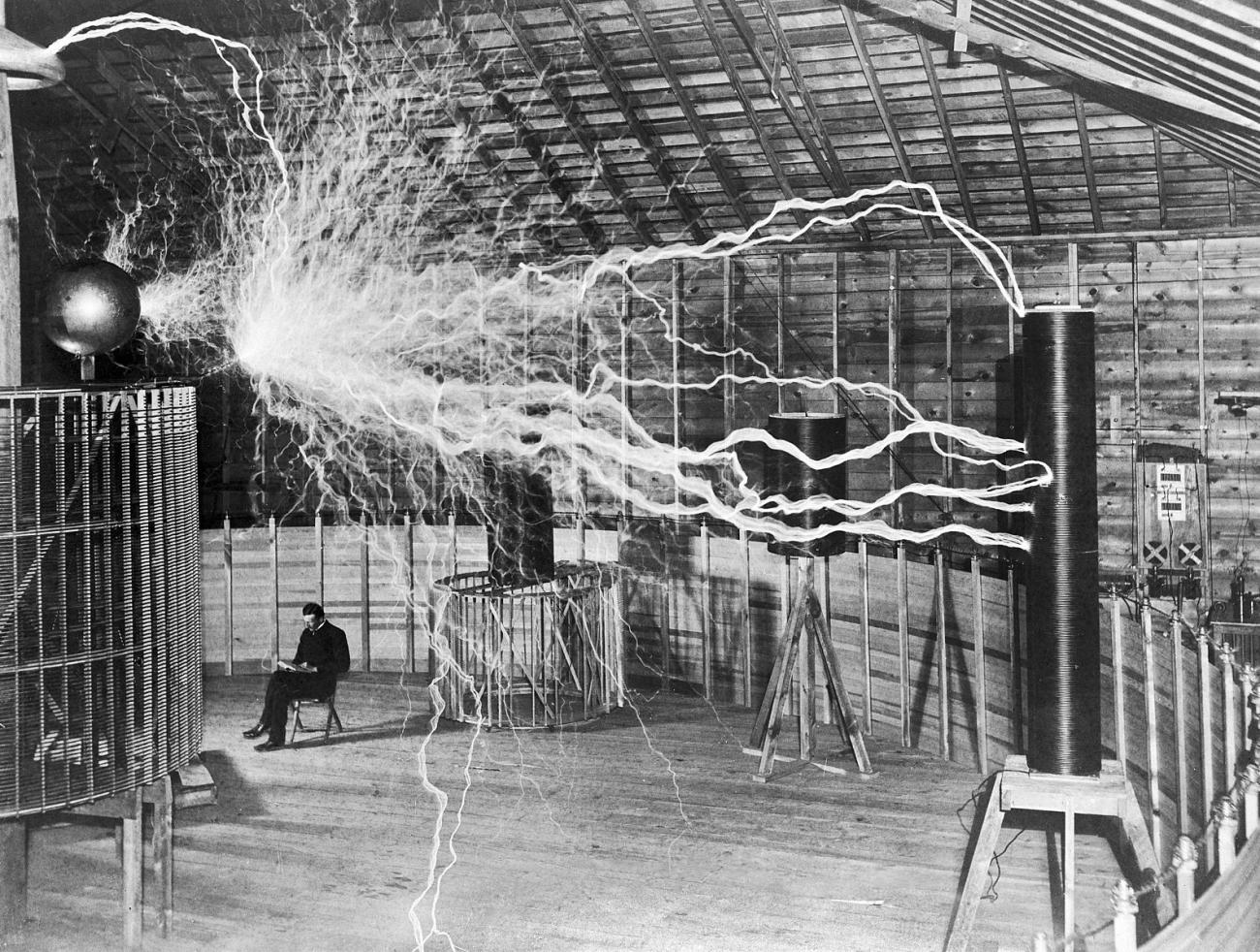
Nikola Tesla in his laboratory. Image: Dickenson V. Alley | licence CC BY-SA 4.0
The German Romantic Rebellion
Steiner was very much a child of the German Romantic rebellion.
The German Romantic philosophers popularised the idea of an Absolute or collective level of mind, rooted in the ancient concept of the anima mundi or the world soul. This idea harks back to Plato, who sees the world as a living organism with one soul pervading the whole. Romanticism was a reaction against the materialist view of the universe as being an immense machine made up of largely unrelated parts. It tried to address the psychological isolation and alienation that arose from this mechanistic view of the world—a problem that is still very much with us today. It did this by trying to see the individual as being organically incorporated into the collective whole.
However, while Romanticism did not deny natural science or the findings of empirical science, it did lead to (not always successful) attempts to reconcile the scientific materialism of the Enlightenment with the organic sentiment of Romanticism.
Although Steiner was later to develop a reputation as an esotericist and spiritual teacher, his early mission was as a philosopher seeking to promote a particular and radical idea of knowledge. From this sprang a whole new anthropology and cosmic theory of human evolution. He was, in some ways, a warrior for the Romantic cause in a world that was being stripped of all magic and meaning by rational materialism.
Plato and the Forms
Steiner’s thought owes much to the ancient Greek Philosopher, Plato.
In Plato’s Phædo, Socrates states that the soul is immortal and cannot be destroyed, as it originates in (and fell from) a divine realm called the world of forms or ideas. This means that a human being has an immortal, irreducible spiritual element, which Plato calls “soul” and Steiner calls “spirit”.
Plato’s realm of forms is a non-material “dimension” that contains divine templates (living blueprints or archetypes) for all living things. There is only one archetype for each type of being—one for cats, one for birds and so on. These invisible templates are made of mind stuff and are “projected” into the material world. All of the forms (cats, dogs, trees, etc.) of the material world derive their existence from these immaterial “templates”. Because they are made out of the same stuff as the human mind, in theory, human beings should be able to perceive them.
Steiner was influenced by the Romantic philosopher and scientist Goethe, and was once employed as the editor of his unpublished scientific works. Goethe had carried out experiments on the metamorphosis of plants, and through disciplined “imaginative observation” had observed the archetype of form of all plants that lay in what Steiner called the supersensible world or the realm of spiritual causation (the realm of forms).
But why could Goethe see the forms while most people can’t?
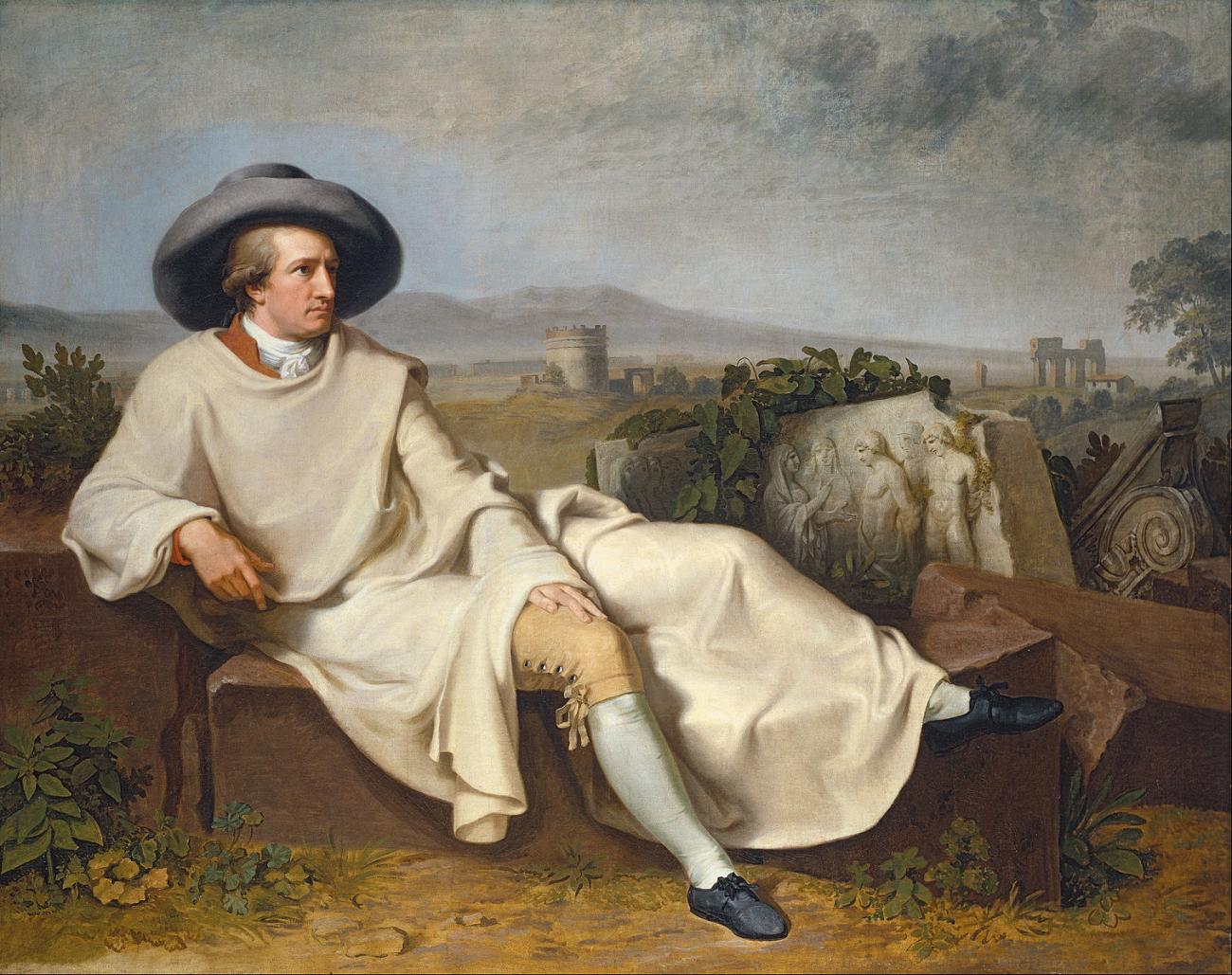
Goethe in the Roman Campagna (Johann Heinrich Wilhelm Tischbein) | public domain
Plato argued that only the purified soul is able to see and to understand (because they also contain profound meaning) these forms. This is because when the souls fell from the divine realm, they became weighed down and blinded by the material.
He believed that the soul could only purify itself through “philosophy” (philo-sophia: the pursuit of wisdom). As the soul was progressively purified by repeated philosophical practice, it became possible to perceive the forms; re-enter their immortal mental realm and escape the cycle of reincarnation in a physical body: a kind of “salvation”.
Although the Greek system of philosophy is seen as being a “rational’” system, and hence as the basis for the development of science and reason in the West, by “philosophy” Plato did not mean the kind of things that you might learn in a British university. He was referring to an inner knowing that is more akin to a kind of visionary, mystical intuition. The Platonic idea of (spiritual) knowledge does not rely on divine revelation but emphasizes the innate ability of the human mind to apprehend spiritual reality through its own efforts. This is a philosophy that takes the place of religion rather than aiding it.
Plato was very pessimistic that any but a select few would be able to attain this kind of “salvation”. Salvation through the development of mystical knowledge and the science of the soul would be open only to “practising” philosophers.
It seems to have become something of a mission of some eighteenth- and nineteenth-century German philosophers to extend this “gnostic” salvation (redeeming oneself through the acquisition of knowledge) to all people. This became particularly evident in the work of Georg Wilhelm Friedrich Hegel (1770–1831).
It was Hegel who developed the modern theory of the Absolute mind. He thought that knowledge of the higher realm also existed in the form of unconscious archetypes (images and folk-themes; a concept later pursued vigorously by Jung) that lie in the völkisch lore and myths of all nations. This was a sort of “as above, so below” safety net. In other words, simple people could achieve some level of divine knowledge and admittance to the Absolute mind if they were encouraged to focus on and open themselves up to the folkish images present in the lower world of the collective unconscious.
It was already commonly accepted by this era, the early industrial Europe of the turn of the nineteenth century, that simple country folk often had clairvoyant and second-sight abilities that had apparently been lost to their more rational and domesticated fellows in the towns and cities.
Father Alois Wiesinger, Abbot of the Cistercian Schlierbach Abbey in Upper Austria, was one of the few twentieth-century Christians to take an active interest in parapsychology. He argued that many paranormal phenomena have their origin in a kind of waking sleep in which the individual experiences a partial freeing or loosening of the bonds between the body and soul:
A special form of these pathological dreams is to be found in the waking dreams which intermittently occur in the so-called second sight of the Spokenkieker [spook-seers] in Westphalia and among similarly endowed persons in Scotland, the Tyrol, and other places where the inhabitants live far away from the noise and bustle of ordinary life and consequently lead a relatively monotonous life conducive to day-dreaming.
Steiner agreed that the hypnagogic state, especially that liminal zone between waking and sleeping, was conducive to the knowledge of the spiritual realms. However, he believed that it was possible to approach the spiritual world scientifically and in clear consciousness with a discriminating mind because he himself had been able to do this. He believed this faculty was open to all human beings, but only if people would turn their minds towards its development.
It is this development of the faculty to perceive the spiritual world in clear consciousness that is the core of Steiner’s science. This was an aim that he pursued with messianic fervour.
Steiner makes it clear in his autobiography that his early objective was to develop a philosophy of his own. It was to this end that he studied Hegel. And, although he remained a lifelong admirer of the philosopher, he found his work “distressing” because he confined his work to the abstract world of thought.
Steiner, on the other hand, wanted to march on from the world of living thought “to the perception of a world of concrete spirit”. He explains:
I saw that many persons felt there was a difference between experience and thought. To me thought itself was experience, but of such a nature that one lived in it, not such that it entered from without into men.
His explanation brings to mind Tesla’s account, where, rather than experiencing a vivid inner life, he seemed—in a very real way—to inhabit his “inner space” bodily.
In spite of his experience with the spirit of his dead relative, Steiner was not a spiritualist. He despised the rappings and fluidic manifestations of contemporary spiritualism. Rather, he grouped this experience with his early awakening to geometry! Indeed, a grasp of geometry was a requirement in Plato’s academy, as well as among the Pythagoreans. Contemplation of geometrical forms was designed to lead to the recognition of their reality: that they had a very real existence outside of material manifestation which could be grasped by the human mind. This was held to be a necessary step in grasping the reality of immaterial forms and an essential step on the road to pure philosophical knowledge. Steiner seems intuitively to have understood this on being given his first geometry textbook when he was nine years old.
He states:
Mathematics was very important for me as the foundation under all my strivings after knowledge. In mathematics there is afforded a system of percepts and concepts which have been reached independently of any external sense impressions. And yet, said I to myself constantly at that time, one carries over these perceptions and concepts into sense-reality and discovers its laws. Through mathematics one learns to understand the world, and yet in order to do this one must first evoke mathematics out of the human mind.
So, it is only through a grasp of the living mathematical forms in the human mind that one can unlock the scientific laws of the solid material world that is open to our ordinary senses. Moreover, for Steiner, this is absolutely the same ground of inner knowing or philosophy that includes the spirits of the dead, whose discovery should be just as open to scientific knowledge as the worlds of geometry and calculus.
A Science of the Mind
Steiner employed his own abilities as a “seer” into the spiritual world of causation and the supposed supersensible historical records (the Akashic records) to devise an eye-wateringly elaborate narrative of cosmic evolution which is beyond the scope of this piece. It is this account that has pulled him into the racial controversy and tainted his reputation. This is through an association of ideas with the “applied biology” and eugenics of the Third Reich, which includes the concept of the Aryan race attributed to Steiner and to the theosophist Madame Blavatsky, as highlighted by J. Paul Greenaway.
The understandably fraught arguments regarding the racial theories of the Nazis, however, perhaps obscure the true nature of Steiner’s account of historical and future human evolution, which involves the transformation of humanity into a completely new species, or the next of many “root races” that have evolved through cosmic “epochs”. The next phase of evolution will see humanity begin to shed some of the density of our descent into matter.
Steiner was extremely interested in the emerging Darwinist theories of evolution and he cultivated a somewhat surprising relationship with the German promoter of Darwin’s ideas, Ernst Haeckel. Whilst they approached evolution from opposite ends of the spiritual-material spectrum, they were both (unlike Plato or Christianity) monists. This means that they both believed that our reality ultimately derives from one substance. For Haekel, matter came first (ontology recapitulates phylogeny); but for Steiner, matter arose from spirit.
It is human evolution that preoccupies Steiner, and he believed that the next evolutionary stage must be based on the development of the ability to perceive the supersensible world.
He opens his book Theosophy: An Introduction to the Supersensible Knowledge of the World and the Destination of Man (1904) with a quotation from the philosopher Johann Gottlieb Fichte regarding his Science of Knowledge:
This doctrine presupposes an entirely new inner sense organ or instrument through which a new world is revealed having no existence for the ordinary man.
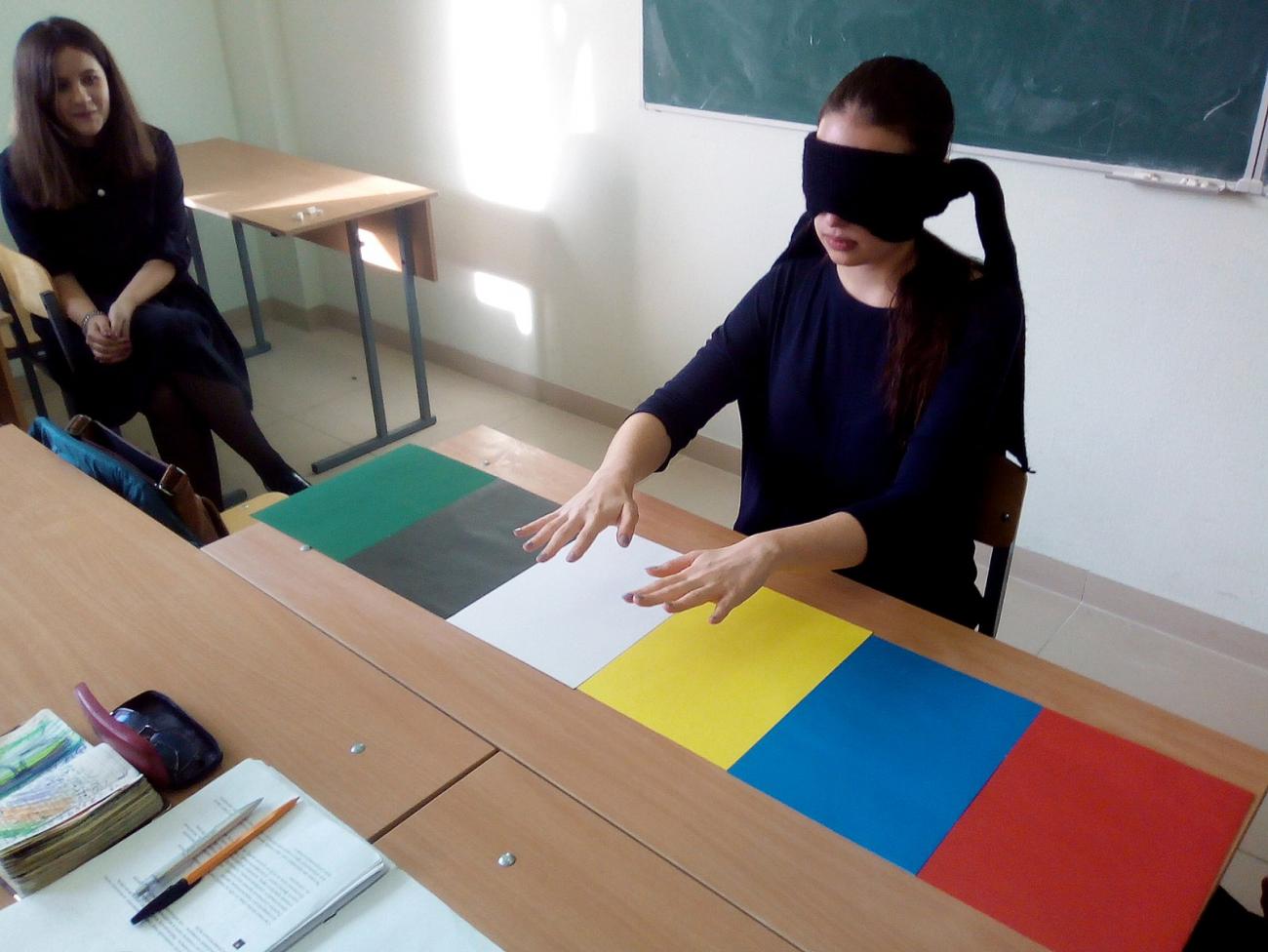
Extrasensory perception. Image: Alexey Paragin | licence CC BY-SA 4.0
Steiner goes on to elaborate that the “ordinary” man who does not develop this sense organ will be as a blind person in a sighted world. This new doctrine will be incomprehensible to such a one. In fact, those who do not, at some level, absorb this doctrine will no longer be considered “normal” human beings:
Everyone can fulfil his task as a man without understanding anything of botany, zoology, mathematics and the other sciences. He cannot, however, in the full sense of the word, be a human being without having come in some way or other nearer to an understanding of the nature and destination of man as revealed through the knowledge of the supersensible.
Yet, unless we should then despair for the future of unheeding humanity, he argues that we should not “doubt for one moment the possibility of opening the eyes of every earnest person to these things.”
I have no reason to doubt his many biographers, who say that Steiner was a warm and gentle person who eschewed force and showed only kindness to people. But it is easy to see that such extravagant assertions could lead less enlightened followers to extreme conclusions.
Steiner’s life was devoted to opening the eyes of every “earnest person”, but he struggled to find an audience for his ideas until he became the secretary general of the German Theosophical Society in 1902. From this time, he transformed from an apparent academic philosopher into something more like a Renaissance mage. Indeed, it was his dedication to the promotion of his version of Western esotericism that finally led to his split from the more Eastern-facing Theosophical Society. He established his own Anthroposophical Society in 1913.
He claims that as a very young person, he had had an encounter with a mysterious spiritual “master” who had told him to conceal his essentially esoteric programme for human evolution in idealist philosophy. From 1902, however, the philosophical covering slid away and Steiner began to promote his ideas more overtly in the Western esoteric spiritual tradition. At the heart of his teachings lay a wildly eccentric and heretical version of Christianity (including the insistence that there are two Christs and two devil figures).
This shift is less surprising if we consider that the philosophical phase involved the development of the idea of what needed to be done. The second (Neoplatonic and Hermetic) phase then made manifest his attempts to initiate people into the practical means of how this might be achieved. Steiner’s place in the Western spiritual tradition deserves much more attention but is beyond the reach of this current piece. It may be illuminating to remember that even Plato was a member of the Eleusinian Mystery religion.
Back to the German Romantic Rebellion
In order to fully understand the nature of Steiner’s science and why it is relevant for us today, we must cast an eye back to the world that produced him.
We have already seen that he was rooted in the Romantic tradition. In the eighteenth century, this initially produced a different approach to science in Germany that counterpoised the rational materialism of the rest of Europe. A good example of this is the German approach to magnetism/mesmerism.
The celebrated German magnetizer, Anton Mesmer (1734–1815), argued that all animate and inanimate objects are pervaded by a type of invisible magnetic fluid. He claimed to be able to cure diseases by projecting his own magnetic fluid into the bodies of his patients, thereby correcting their own deficient or imbalanced flow. This often provoked a type of convulsive seizure or healing crisis.
During the same period, the documentation of anomalous experiences began to alert people to the idea that such a thing as an unconscious mind might exist. The popular imagination was gripped by tales of somnambulism (sleepwalking) which ascribed positively superhuman, and even miraculous, qualities to the hidden realms of the human mind. In his classic work The Discovery of the Unconscious, Henri F. Ellenberger states:
Marvelous stories were published everywhere about sleep-walkers who would write, swim rivers or walk over roof tops in full-moon nights and whose lives were endangered if they were suddenly called by their names and wakened.
In 1784, an aristocratic amateur French scientist, Amand-Marie-Jaques de Chastenet, the Marquis de Puységur, was experimenting with the healing techniques of Dr. Mesmer when his twenty-three-year-old patient, Victor Race, exhibited an unusual crisis. He went into a ‘magnetic sleep.’ In this ‘sleep’ state, he seemed more aware, confident and intelligent than normally. He was able to answer questions and repeat songs that the Marquis was singing not out loud, but to himself in his own head. The Marquis was also able to introduce a suggested solution to a problem that Victor was having with his sister, which he then carried out in his normal state of consciousness. On waking, he had no recollection of any of these proceedings.
Puységur was able to reproduce this phenomenon in Victor and in others. Most peculiarly, his subjects, once in this strange magnetic sleep, were able to diagnose their own illnesses and the illnesses of other people, predict their courses and prescribe appropriate treatments. This was an absolute sensation. It appeared that the Marquis had found a way to produce artificially the incredible state of somnambulism. This new waking sleep, during which the subject became completely obedient to the will of the operator, was called ‘artificial somnambulism’; and, following on from the work of Puységur, the mesmeric crisis all but disappeared, and mesmerism came to resemble something much closer to hypnotism.
The discovery of the magnetic sleep made the existence of an unknown mind common knowledge, and the use of post-hypnotic suggestion made it clear that the boundaries between different levels of mental functioning were highly porous. Towards the end of the nineteenth century, the work of the celebrated French neurologist, Jean-Martin Charcot, at the famous Parisian asylum of Pitié-Salpêtrière showed that the mind could cause dramatic physical problems, when he managed to produce both paralysis and mutism through hypnotic suggestion. He suggested that some people lived in an almost permanent state of somnambulism, and, as such, were very open to suggestion and autosuggestion.
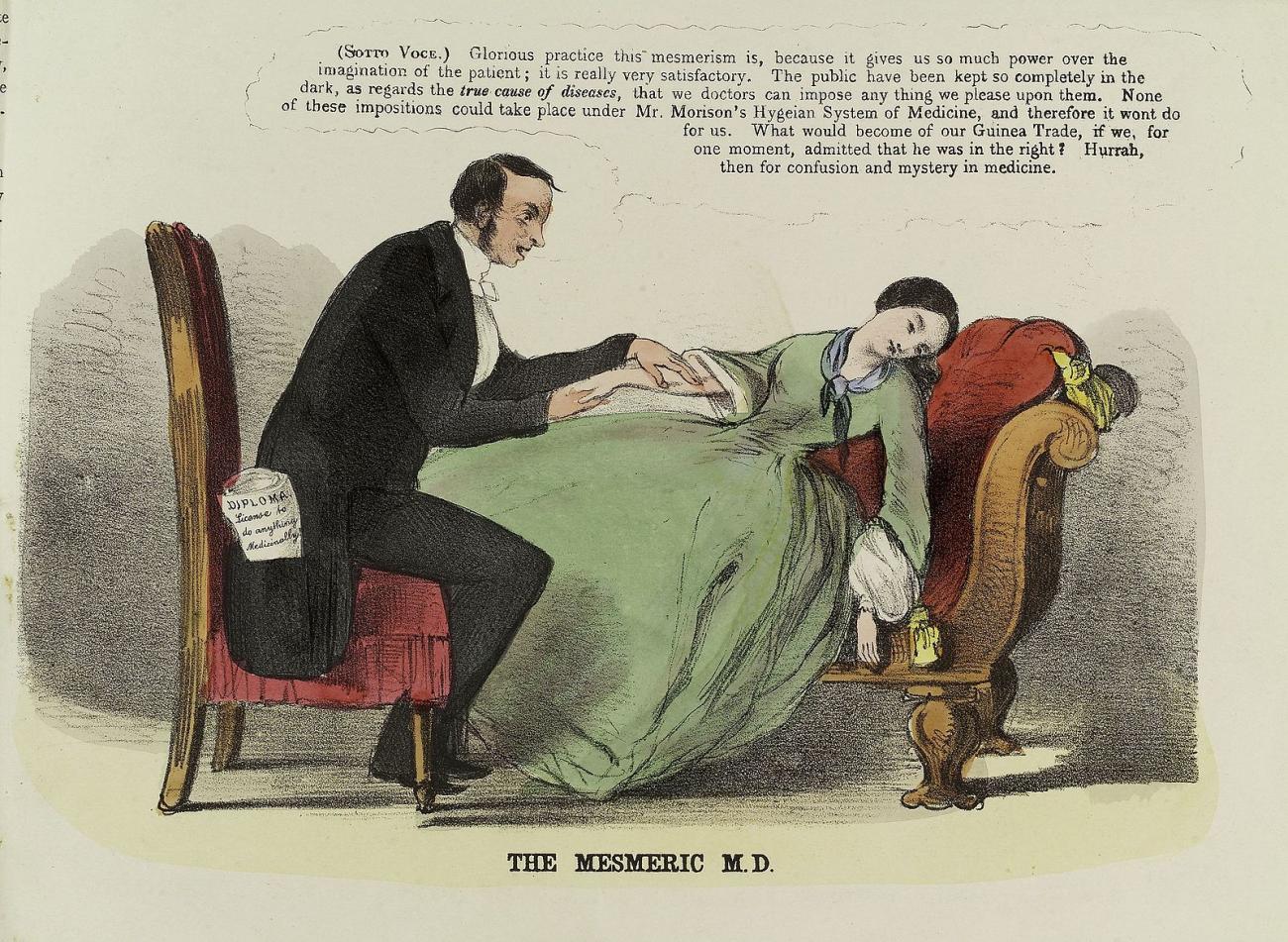
A mesmeric physician taking advantage of his female patient. Image source: Wikimedia Commons | licence CC BY-SA 4.0
Once the second mind had been discovered, a debate ensued as to whether it was ‘closed’ or ‘open’. If it is ‘closed’, then it will contain only those things which at one time or another went through the conscious mind, such as forgotten memories and memories of things that the conscious mind had only fleetingly perceived, as well as daydreams or fantasies. Others saw the hidden unconscious mind as being ‘open’ and in communication with other minds (note how Victor Race was able to repeat songs that the Marquis de Puységur was singing to himself in his own head) and as a collective and mysterious realm or world soul.
The latter was particularly the view taken in Germany, where magnetism was taken very seriously and studied in several universities. It was found that a kind of sympathetic telepathy underpinned magnetism and the centrality of the rapport between magnetized and magnetizer became increasingly apparent. This involved a peculiar sensitivity of the magnetized to the mesmerist, including the ability to perceive the latter’s thoughts and sometimes bodily sensations. This could also occur in reverse, so the phenomenon came to be known as magnetic reciprocity.
This often brought the morality of magnetism into question, because it was possible for eroticism to enter into the relationship. Even where this did not occur, magnetism often provoked strong, lasting and even irresistible platonic bonds. Cases were documented where those who had been magnetized by the same person came to feel a strong and enduring attachment between them, in one case calling each other brothers and sisters.
In Germany, rapport was developed as a more philosophical concept, denoted as Sympathie (literally, fellow-suffering) and sometimes likened to the intimacy between a mother and her unborn child in the womb. This idea harmonised with the Absolute mind of the Romantic philosophers and provided the background for the emergence of people such as Steiner.
Ironically, it was mainly through the efforts of Steiner’s Austrian contemporary, Sigmund Freud (1856–1939), that the modern view of the mind as a closed system became received wisdom. Freud’s closed mind and Darwin’s materialistic theories of evolution have pretty much dominated the Western self-image ever since.
The Human Mind as a Spiritual Battlefield
Steiner’s science is essentially that of the development of the open mind in order to direct the human race upwards from our entanglement in dense matter back to a more spiritual state. That is the destiny of the human race, according to Steiner’s scientific investigations of the supersensible world. We have no choice but to evolve into the next planetary phase because, according to Steiner, the Earth is dying.
Indeed, at a gathering to commemorate the 75th anniversary of the Bretton Woods Conference, the economist/philosopher Charles Eisenstein declared that following his own spiritual investigations, the “over-soul” of the Earth is now in the final throes of decrepitude and the planet is awaiting its reincarnation, to be inhabited by a new “spirit” with whom we must co-operate. This declaration was made in July 2019 before many luminaries of the world’s financial system.
The reason that we should look more closely at Steiner and begin to take him seriously is that at least part of the globalist agenda seems to rely on his science of the “open” mind.
In January 2015, one man died and five others were hospitalised with serious neurological damage (lesions to the hippocampus) sustained during trials of drugs that were being run by the French company Biotrial on behalf of the Portuguese pharmaceutical company BIAL. There was a great deal of controversy surrounding these trials: firstly because the company had apparently not divulged that the same compound had previously caused damage in dogs, and secondly because of confusion around the nature of the compound being tested. There was widespread suspicion that they were conducting “parapsychological” research.
A leading Italian neurologist, Professor Vincenzo Piazza, the director of neurological research at the University of Bordeaux, very publicly expressed his outrage at the "unscientific" nature of some of the areas of interest of BIAL (not because someone had died and others suffered life-changing damage!).
It soon became obvious that BIAL (through the associated BIAL Foundation) had been funding parapsychological research for over twenty years in twenty-five countries, including the United Kingdom, the United States, Germany and Russia. According to the company website:
The research funded by the BIAL Foundation from 1994 to July 2022 has resulted in the publication of 2036 papers, 1632 of which in indexed journals (in Scopus or Web of Science) and 1404 in impact factor journals. Almost half of the papers were published in journals that ranked in the first quartile (Q1) in their subject area. By July 2022, 1472 papers were cited on average 24 times.
The lawyer for the family of the dead man cited Professor Marescaux, a leading expert in complications arising from the use of cannabis, in expressing suspicions that the company was hiding the true purpose of the trials. While the company claimed that these were aimed at the development of a painkiller, Professor Marescaux said that it was highly possible that they were investigating the role of endocannabinoids (chemical compounds that act on receptors in the brain to suppress certain neurotransmitters) in parapsychological phenomena.
The first director-general of UNESCO, Julian Huxley (a recurrent subject of UK Column interest), argued that parapsychology should be studied in universities as part of the efforts towards global unity. This has been carried out historically but seemingly to a limited degree, as we are operating on the borders of Enlightenment and “Romantic” thinking. On the other hand, many billionaire-funded private institutions have kept the torch burning. These include the Fetzer Institute and the John Templeton Foundation.
Whilst we remain largely oblivious to the true nature of government research in this area, Julian Huxley’s ambitions for research in universities may now be coming to fruition under various guises such as “consciousness research”, “spiritual ecology,” the “psychology of exceptional experience” and “ecopsychology”. Whatever the label, all of these emerging disciplines have for their aim the transformation of human consciousness: a transformation of which the majority of the planetary population is completely unaware.
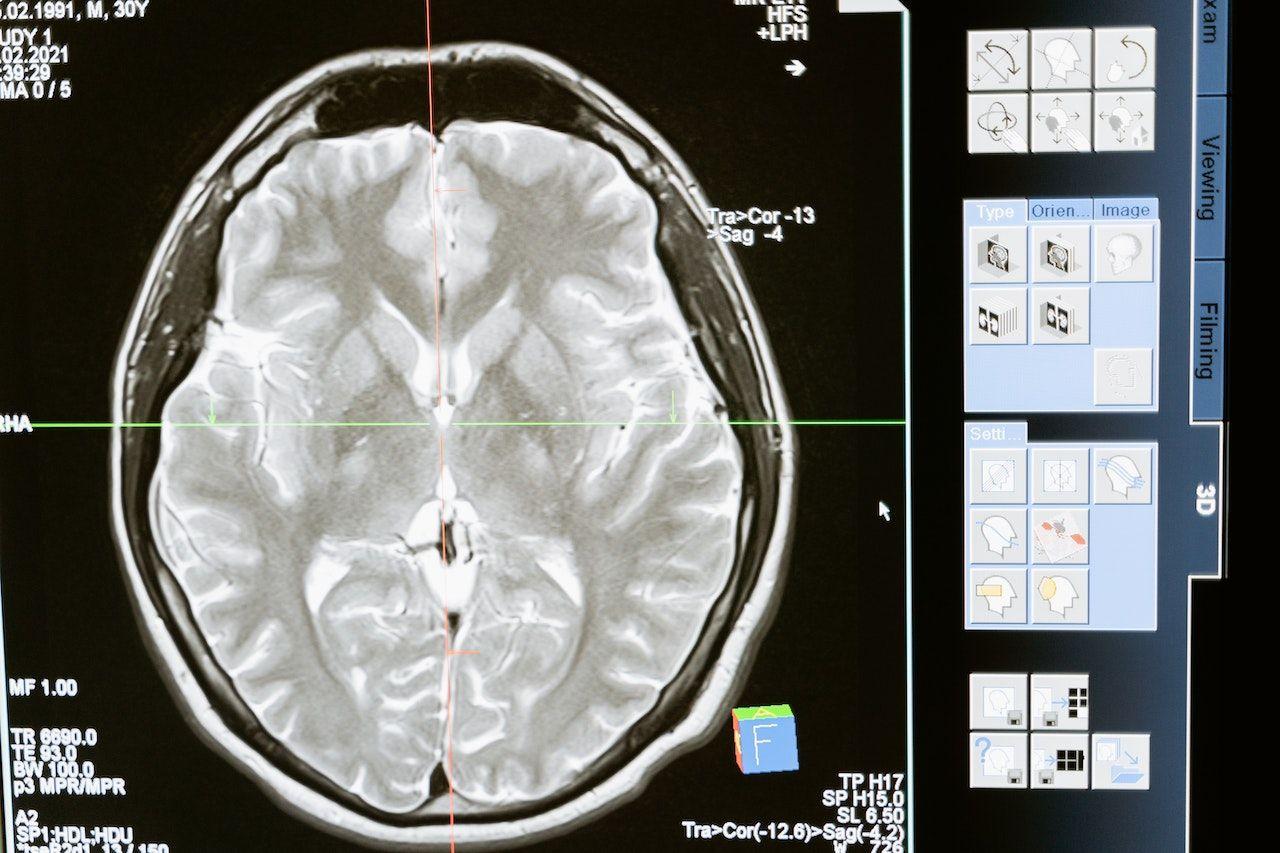
Brain scan image
Steiner kept the Romantic idea of the open nature of mind alive, against the closed doctrine of his contemporary Freud. Moreover, while the general population still largely subscribes to the version of ourselves given to us in our rationalist schools, at least some of the intellectual and political élite seem to be moving on. In order to keep up with them, we must fight against our spiritual blindness.
In one article linked by Paul Greenway, an enraged parent rails against the esoteric agenda that she found “hidden” in the curriculum of her child’s Steiner school. It may seem harsh, but to some extent, I lack sympathy. It is difficult to blame Steiner for our own failure to investigate the nature of the ideas that are directing our lives with increasing force. If we will not stand up to schools teaching children how to masturbate, how can we possibly guide them through the spiritual battlefield of modern globalisation and the indoctrination hidden in the climate change agenda?
Conclusion
On his death, Steiner’s wife, Marie von Sivers, wrote this eulogy at the end of his unfinished autobiography:
His life, consecrated wholly to the sacrificial service of humanity, was requited with unspeakable hostility; his way of knowledge was transformed into a path of thorns. But he walked the whole way, and mastered it for all humanity. He broke through the limits of knowledge; they are no longer there. Before us lies this road of knowledge in the crystal clarity of thoughts of which this book itself constitutes an example. He raised human understanding up to the spirit; permeated this understanding and united it with the spiritual being of the cosmos. In this he achieved the greatest human deed. The greatest deed of the Gods he taught us to understand; the greatest human deed he achieved. How could he escape being hated with all the demonic power of which Hell is capable?
But he repaid with love the misunderstanding brought against him.
So, to finish, my mind goes back to the pink Steiner school of my childhood and its larger-than-life source of inspiration.
From the same vantage point in the doctor’s surgery, I could also look westwards to nearby Derby and the home of the nineteenth-century philosopher, Herbert Spencer, who believed that only the fit should survive in society and that no relief should be given to the poor. Erasmus Darwin hailed from a little further to the east, on the other side of Nottingham. The work of his grandsons, Charles and Francis (Galton) would constitute the most devastating challenge to our Christian society ever yet mounted. In their magic circle of ideas, the mechanisms of evolution and eugenics would be used to mould humanity to their way of thinking. Like Steiner, they proclaimed that they had discovered the true science hidden beneath human history and now they could use it to chart the course of the whole of humanity.
It took me many years to see that my little childhood world of miners, steelworkers and factory and shop workers was perilously encircled by self-appointed messianic magicians working from a grimoire entitled “science”. It is difficult not to conclude that, to them, we were only pawns in a great game of cosmic chess. So, now I ask myself the question: were the children within the walls of the pink school (probably many my own age) really being taught the “greatest deed of the gods” while I was waiting for my prescription for antibiotics? I suppose I’ll never know.
General Sources
Carlson, W. Bernard, Tesla: Inventor of the Electrical Age, Princeton University Press, 2013
Ellenberger, Henri F, The Discovery of the Unconscious: The History and Evolution of Dynamic Psychiatry, Basic Books Inc., 1970
Lachman, Gary, Rudolf Steiner: An Introduction to His Life and Work, Floris Books 2020 (first published 2007)
Webb, James, The Occult Establishment, Archive.org, 1976
Steiner, Rudolf, Rudolf Steiner: an Autobiography, Rudolf Steiner Publications, 1977
Steiner, Rudolf, Theosophy: An Introduction to the Supersensible Knowledge of the World and the Destination of Man, 1904
Main article image: Man and galaxy | Unsplash licence

